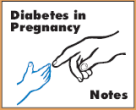|
|
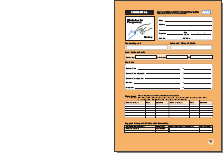
|
|
Page 1 - Lists personal
details and contact details of the specialist
diabetes team who will provide care during
the pregnancy. A section is included for
recording signatures of everyone who writes
in the notes. Contact details for support
groups are also listed here. |
|
|
| |
|
Page 2 - First appointment – Space
to document medical, obstetric history and
initial clinical findings ascertained on the
first contact with the specialist diabetes
team, including medication and any pre-existing
medical complications attributable to diabetes.
There is a section to record GTT results and
rationale for screening for gestational diabetes |
|
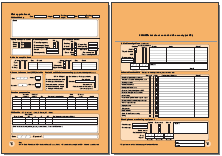
| |
Page 3 - Initial blood
tests are documented here. There is an information
checklist providing prompts for care
providers to discuss various topics with
the woman e.g. hypoglycaemia, sick day rules.
There is a section to document information
regarding type of blood glucose monitoring
equipment issued and its use has been
demonstrated and supervised. |
|
|
| |
|
Page 4 - Information
for women about what diabetes is and the members
of the specialist health care team. |
|
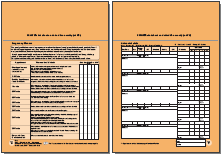
| |
Pages 5 - This is
a free text page for the dietitian to
record information following antenatal contacts. |
|
|
| |
|
Page 6 - The Pregnancy planner is a
guide to the minimum schedule of appointments
that women should have with the health care
team. The clinicians can tick who will see
her at each appointment. It also contains information
for women on what tests and investigations
will be offered at each appointment.
|
|
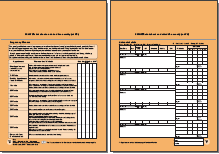
| |
Pages 7 - Provides
space to record clinical findings from antenatal
visits, including insulin type and dose.
Additional sheets with a gummed strip are available,
to be attached to page 10, so that the documentation
flows chronologically |
|
|
| |
|
Page 8 - Information for women
about gestational diabetes and pre-existing
diabetes and how diabetes is treated in pregnancy.
There is also information about diet, testing
blood glucose, hypoglycaemic agents and coping
with hypoglycaemia.
|
|
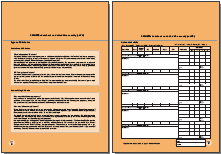
| |
Pages 9 - Provides
space to record clinical findings from antenatal
visits, including insulin type and dose.
Additional sheets with a gummed strip are available,
to be attached to page 10, so that the documentation
flows chronologically |
|
|
| |
|
Pages 10 - Provides
space to record clinical findings from antenatal
visits, including insulin type and dose.
Additional sheets with a gummed strip are available,
to be attached to page 10, so that the documentation
flows chronologically |
|
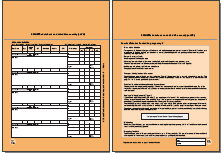
| |
Page 11 - Information for women
about gestational diabetes and pre-existing
diabetes and how diabetes is treated in pregnancy.
There is also information about diet, testing
blood glucose, hypoglycaemic agents and coping
with hypoglycaemia.
|
|
|
| |
|
Page 12 - Information
for women about how diabetes is managed
during labour and the birth, and about
care of her baby following delivery, including
infant feeding and infant blood glucose levels.
Information about planning subsequent pregnancies
is also included.
|
|
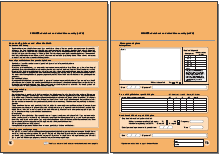
| |
Page 13 - Intrapartum management
plan: Space for the specialist diabetes
team to document intrapartum care, including
the sliding scale insulin regime.
There is also space to document
a post birth plan for women with pre-existing
diabetes and one for women with gestational
diabetes, including whether to continue recording
blood glucose levels post delivery and if so,
the frequency of testing. |
|
|
| |
|
Pages 14 - The home
blood glucose monitoring diary: these
can be used by women to record their home
blood glucose tests results, with space to
document agreed targets. The top of page
19 has space to document type of diabetes,
date of diagnosis and retinal assessment,
if undertaken and can be seen throughout
the document. Space is provided to document ultrasound scan and
result. |
|
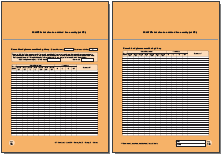
| |
Pages 15 - The home
blood glucose monitoring diary: these
can be used by women to record their home
blood glucose tests results, with space to
document agreed targets. The top of page
19 has space to document type of diabetes,
date of diagnosis and retinal assessment,
if undertaken and can be seen throughout
the document. Space is provided to document ultrasound scan and
result. |
|
|
| |
|
Pages 16 - The home blood
glucose monitoring diary: these can be
used by women to record their home blood
glucose tests results, with space to document
agreed targets. The top of page
19 has space to document type of diabetes,
date of diagnosis and retinal assessment,
if undertaken and can be seen throughout
the document. Space is provided to document ultrasound scan and
result. |
|
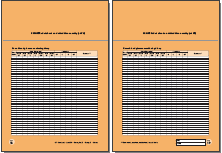
| |
Pages 17 - The home
blood glucose monitoring diary: these
can be used by women to record their home
blood glucose tests results, with space to
document agreed targets. The top of page
19 has space to document type of diabetes,
date of diagnosis and retinal assessment,
if undertaken and can be seen throughout
the document. Space is provided to document ultrasound scan and
result.seen
throughout the document. |
|
|
|
|
|
Pages 18 - The home
blood glucose monitoring diary: these
can be used by women to record their home
blood glucose tests results, with space to
document agreed targets. The top of page
19 has space to document type of diabetes,
date of diagnosis and retinal assessment,
if undertaken and can be seen throughout
the document. Space is provided to document ultrasound scan and
result. |
|
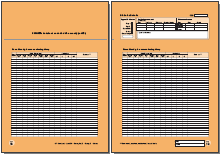
|
|
Pages 19 - The home
blood glucose monitoring diary: these
can be used by women to record their home
blood glucose tests results, with space to
document agreed targets. The top of page
19 has space to document type of diabetes,
date of diagnosis and retinal assessment,
if undertaken and can be seen throughout
the document. Space is provided to document ultrasound scan and
result. |
|
|
|
|
|
Page 20 - Postnatal
details: Space to document summary details
of the birth event and clinical findings
from postnatal follow up visit and future
management plans..
|
|
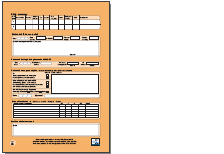
|
|
|
